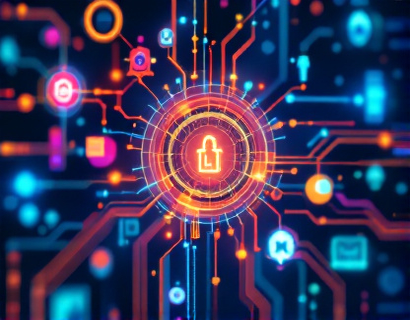Advanced Guide to Ethereum Layer 2: Scalability and Interoperability for 2025 Developers and Enthusiasts
As the Ethereum ecosystem continues to evolve, understanding Layer 2 solutions has become crucial for developers and enthusiasts aiming to stay ahead. This comprehensive guide delves into the intricacies of Layer 2 technologies, focusing on scalability and interoperability, two pivotal aspects that define the future of blockchain development. From state channels to sidechains, and from rollups to cross-chain bridges, this article provides an in-depth analysis of the tools and strategies that are shaping the next generation of Ethereum applications.
Introduction to Layer 2 Solutions
Layer 2 solutions are designed to enhance the scalability and efficiency of blockchain networks without altering the underlying protocol. These solutions operate on top of the base blockchain, or Layer 1, and are essential for addressing the growing demand for faster transactions and lower fees. In the context of Ethereum, Layer 2 innovations are particularly significant given Ethereum's role as a leading platform for decentralized applications (dApps) and smart contracts.
Layer 2 technologies can be broadly categorized into two main types: state channels and rollups. State channels enable multiple transactions to occur off-chain, with only the final state being recorded on the blockchain. This approach significantly reduces the load on the main chain, leading to faster transaction times and lower gas fees. Rollups, on the other hand, batch multiple transactions into a single transaction on the main chain, further optimizing resource usage and enhancing scalability.
State Channels: A Deep Dive
State channels, also known as payment channels, are a Layer 2 solution that allows two or more parties to conduct a series of transactions off the main blockchain. The initial deposit is locked in a smart contract, and subsequent transactions are executed privately. Once the channel is closed, the final state is submitted to the blockchain, which verifies and finalizes the transactions. This method is particularly useful for applications requiring frequent, small transactions, such as gaming and micropayments.
One of the key benefits of state channels is their ability to achieve near-instant transaction times and minimal fees. However, they require both parties to be online simultaneously to open and close the channel, which can be a limitation in certain use cases. Despite this, state channels remain a powerful tool for enhancing user experience and reducing costs on the Ethereum network.
Rollups: Enhancing Scalability
Rollups are another critical Layer 2 solution that addresses scalability by processing multiple transactions off-chain and submitting a single, aggregated transaction to the main chain. There are two main types of rollups: Optimistic Rollups and ZK Rollups.
Optimistic Rollups assume that all transactions are valid and only challenge invalid transactions. This approach significantly reduces the computational load on the main chain, as only disputed transactions require verification. However, the challenge period can introduce some latency, though it is generally minimal.
ZK Rollups, or Zero-Knowledge Rollups, use cryptographic proofs to bundle and verify transactions, ensuring their validity without the need for a challenge period. This method offers faster finality and lower latency, making ZK Rollups particularly suitable for applications requiring high throughput and low latency.
Both types of rollups have gained significant traction in the Ethereum ecosystem, with several projects and platforms leveraging these technologies to build scalable and cost-effective dApps. The integration of rollups with Ethereum's native features, such as ERC-20 tokens and smart contracts, further enhances their utility and adoption.
Interoperability: Bridging the Gap
Interoperability is a crucial aspect of Layer 2 solutions, enabling seamless interaction between different blockchain networks. In the Ethereum ecosystem, cross-chain bridges and atomic swaps are two key mechanisms facilitating interoperability.
Cross-chain bridges allow assets and data to be transferred between Ethereum and other blockchains, such as Binance Smart Chain, Polygon, and Solana. These bridges can be centralized or decentralized, with decentralized bridges offering greater security and trustlessness. By enabling interoperability, these bridges expand the reach and utility of Ethereum-based dApps, allowing developers to build cross-chain applications and services.
Atomic swaps, on the other hand, enable direct, trustless exchanges of cryptocurrencies between different blockchains without the need for intermediaries. This technology relies on smart contracts and cryptographic protocols to ensure the secure and atomic transfer of assets. Atomic swaps are particularly useful for creating decentralized exchanges (DEXs) that operate across multiple blockchains, enhancing liquidity and accessibility.
Case Studies: Real-World Applications
To better understand the practical applications of Layer 2 solutions, let's explore a few real-world examples. A notable instance is the use of Optimistic Rollups by the Axie Infinity gaming platform. By leveraging rollups, Axie Infinity has achieved significant improvements in transaction speed and cost, enabling a more seamless and accessible gaming experience for users worldwide.
Another example is the deployment of state channels by the Lightning Network, which builds on top of Ethereum to facilitate fast and cheap microtransactions. This integration has been particularly beneficial for decentralized finance (DeFi) protocols, where frequent, small transactions are common.
Cross-chain bridges have also found applications in projects like Wrapped Bitcoin (WBTC), which allows Bitcoin holders to use their BTC on the Ethereum network. This interoperability has expanded the utility of Bitcoin and created new opportunities for cross-asset trading and decentralized finance initiatives.
Challenges and Considerations
While Layer 2 solutions offer numerous benefits, they also come with challenges and considerations that developers and enthusiasts must address. One of the primary concerns is the complexity of implementing and maintaining these solutions. Developers need a deep understanding of both the base blockchain and the Layer 2 technology to ensure seamless integration and security.
Another challenge is the potential for centralization, especially in the case of centralized cross-chain bridges. Decentralized bridges, while more secure, can be more complex to implement and may introduce additional latency. Balancing security, scalability, and decentralization remains a key focus for the Layer 2 community.
Furthermore, the evolving nature of Layer 2 technologies means that developers must stay updated with the latest developments and best practices. Continuous learning and adaptation are essential to harness the full potential of these solutions.
Future Outlook
Looking ahead, the Ethereum ecosystem is poised for significant advancements in Layer 2 technologies. The Ethereum 2.0 upgrade, which introduces sharding and proof-of-stake consensus, will further enhance the network's scalability and efficiency. Layer 2 solutions will play a crucial role in this transition, complementing the base chain's improvements and unlocking new possibilities for dApp developers.
Moreover, the growing adoption of Layer 2 solutions is likely to drive innovation in areas such as cross-chain interoperability, advanced state management, and decentralized governance. As the ecosystem matures, we can expect to see more sophisticated and user-friendly Layer 2 tools that democratize access to blockchain technology.
In conclusion, Layer 2 solutions are indispensable for the future of Ethereum and decentralized applications. By understanding and leveraging these technologies, developers and enthusiasts can build more scalable, efficient, and interoperable solutions, driving the next wave of innovation in the blockchain space.










































